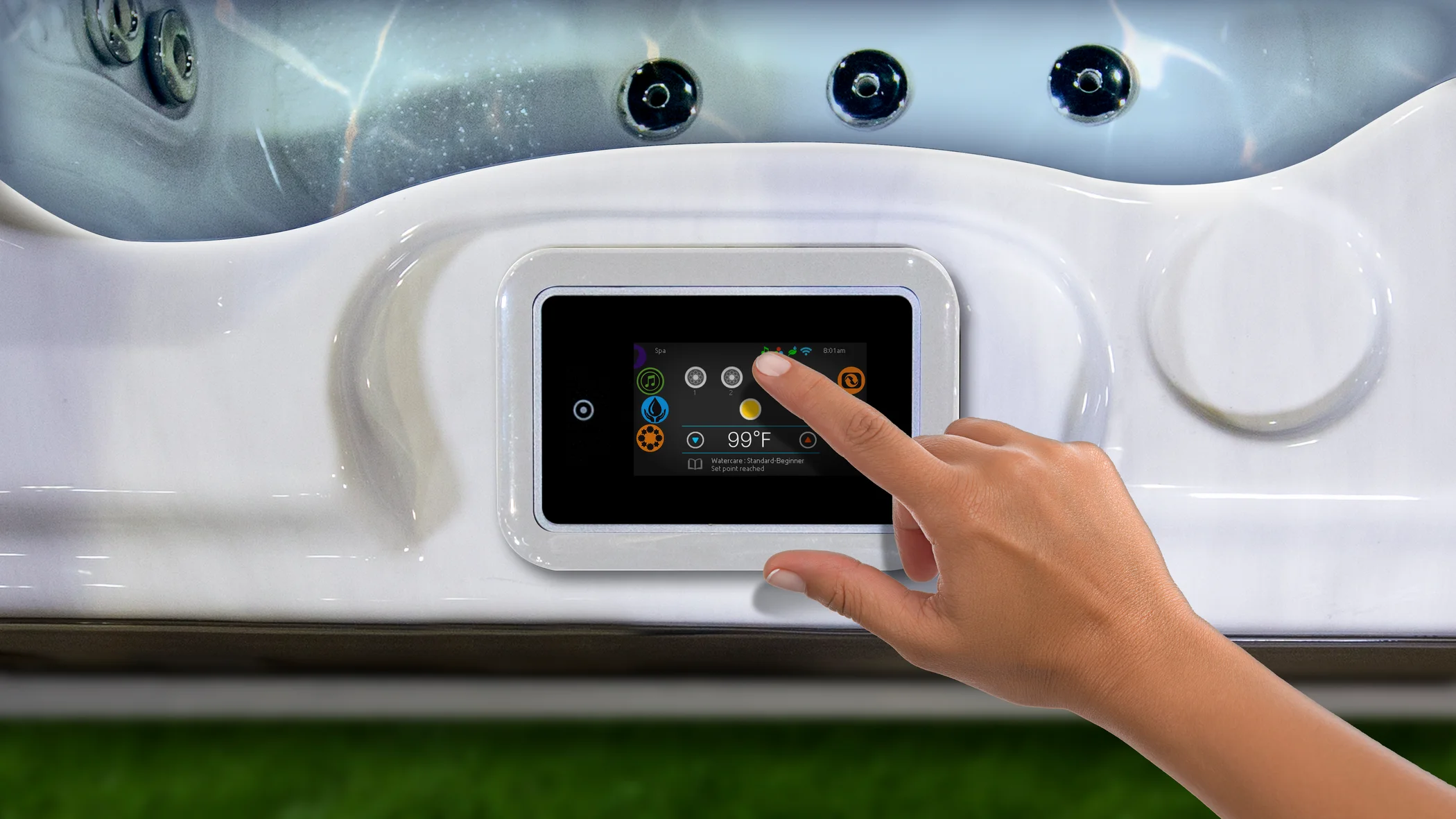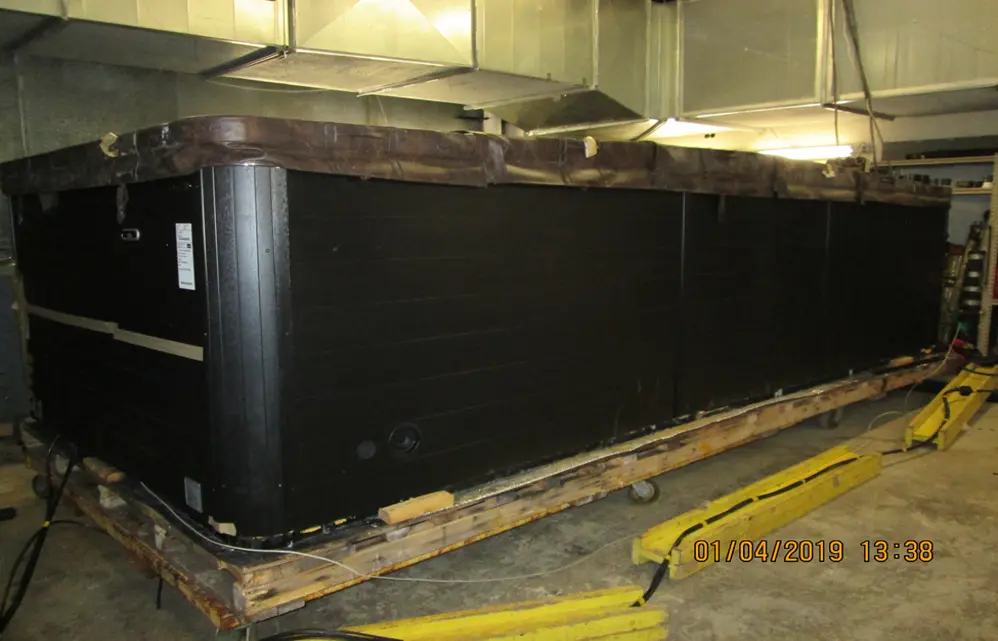How Energy Efficient are Hot Tubs and Swim Spas?

Energy efficiency is one of the most common concerns of anyone looking to buy a hot tub or a swim spa today. There’s a cost to buy a hot tub and a cost to run it and these are key factors in any purchase.
But when it comes to energy efficiency, we know every decision isn’t about cost, though.
People want to ensure they are buying a product that is well-made, as energy efficient as possible, and as good for the environment as possible. We know this because we are asked about this by customers on a regular basis.
We share those goals as a company. We want our hot tubs to be as energy efficient as they can be. As a company, we routinely test, track and try to engineer energy-efficient aspects of our hot tubs, to make sure we meet or exceed any testing around the world.
Of course, we would say that, right? We know, we’re a company that makes hot tubs in an industry prone to bragging. But to back up what we’re saying, in this article we’re going to demonstrate as best as we can how energy efficient our hot tubs are.
In this article, we will go over:
- How energy efficient are hot tubs and swim spas?
- Who regulates hot tubs and swim spas to ensure they are energy efficient?
- What are the main factors that make hot tubs energy-efficient?
By the end, we hope you’ll have a solid understanding of how much energy Hydropool hot tubs use and how the industry as a whole is trying to make more energy efficient hot tubs and swim spas.
How Energy-Efficient are Hot Tubs and Swim Spas?
Like other sectors such as cars and appliances, hot tubs and swim spas have developed significantly in the past few decades, as they have recognized the need to conserve energy and make the best use of it.
That’s not just us saying it. This is a quote from Direct Energy, which is one of North America's largest electricity, natural gas and home services providers (see the whole article here): “The good news, however, is that if you're planning on buying a brand-new hot tub, it's likely to be reasonably energy-efficient due to recent technological advances in heating equipment.”
We agree with that. And who do we have to thank for that? The state of California and companies that wanted to make energy-efficient hot tubs all along.
Who Regulates Hot Tubs and Swim Spas for Energy Efficiency?
Many countries, regions, states, provinces and areas today have regulations for hot tubs and swim spas. But the one that started it all and that has the strictest regulations in the world is the state of California in the United States.
Hot tubs and swim spas are regulated as portable electrical spas by a group called the California Energy Commission (CEC). This begun on Jan. 1, 2006.
Why Did California Begin Regulating Hot Tubs and Swim Spas?
California began to do so after it realized that hot tubs and swim spas on the market at the time varied widely in their ability to use energy effectively. The effect of the law was sweeping: “The law threatens to make half of all new spas in California out of compliance,” reported Pool and Spa News at the time.
According to this Pool and Spa News article, which sums up this time period well, California’s goal was to knock out at least the bottom 20 per cent of the hot tub and swim spa makers, or those who made the least-efficient models. Some of those companies may still operate today, but they are not able to sell in California due to the 2006 regulations or they have significantly redesigned their hot tubs so that they can.
California is where hot tubs were originally invented and remains one of the biggest hot tub markets in the world. It also struggles with providing enough power to its residents. So it had a major interest in lowering energy usage, and companies had a significant reason to improve.
How Energy Efficient was Hydropool in 2006?
We passed! Some models had to be updated, with improved insulation around the lip and the seams of our hot tubs in order to pass, but every model Hydropool made exceeded the standards. We applauded the move. It was a wake-up call for the industry and it ultimately prompted Hydropool to re-examine its insulation and its filtration standards.

This is the Hydropool 19DTAX undergoing testing to pass California’s standards. It’s not the prettiest picture so if you want a better view of the swim spa, click here.
How Energy Efficient is Hydropool Today?
We engineer all of our hot tubs and swim spas to ensure they pass CEC standards. We make sure they do before we sell them anywhere in the world. The standards have increased over the years, but we have always ensured we would meet or beat expectations.
How Does the CEC Energy Efficiency Process Work?
Doug Wyatt is Hydropool’s Engineering Program and Safety Manager, who looks after our CEC testing. “Basically, any time we make a significant change to the product, or we come out with new models, we get the units tested,” he explains.
That testing involves shipping a model to the town of Cortland, New York, which is just south of Syracuse. There’s a lab there where the hot tubs and swim spas are tested. There are separate tests for each, but they both work the same way:
- The test measures each hot tub and swim spa as they operate at a set temperature, with a set ambient air temperature and a set humidity.
- What type of cover on the hot tub or spa is noted as well, because it can make a big difference.
- The tub or spa is then run for 72 hours, and the amount of power it has used is recorded.
The power is recorded after that. If only it was that easy to say that your hot tub has to use less than 3 kw/hr and that would be that. But it’s a bit more complicated, because to show efficiency it depends on how much water is in the hot tub.
So the CEC has a complex calculation that ultimately looks at how much power is used, in tandem with how much water is in the hot tub or swim spa tank being heated. This shows how efficient each tub is at converting energy into warm water.
That calculation has been tightened over time, to make the test harder and harder to pass, as standards have increased. These tests are not free incidentally, they cost thousands of dollars to administer to each tub or spa.
How Can I Find Out More About How Companies Stand Today on Energy Efficiency in California?
You can see for yourself how Hydropool and other companies do on the CEC website, but we feel compelled to warn you that this is not an easy site to navigate (proof: The search instructions alone are 21 pages). The CEC is a regulatory body, and it’s not meant as a consumer tool. But if you’re inclined, you can search out the data for every hot tub and swim spa maker who sells in California here.
What Makes a Hot Tub Energy Efficient?
There are several factors in energy efficiency in hot tubs and swim spas, including:
- Pumps – what’s key here is not to have a motor using more energy than you need to do its job and not tasking a motor to work hard all the time. This is why it’s often more efficient to have two pumps, one to power your jets, and the other to power your circulation.
- Insulation – there are many types of insulation, but what you need is the right amount, not the most or the least. Hydropool’s insulation traps the heat inside the cabinet, efficiently directing it to the hot tub’s water itself.
- Cover – you need enough thickness to trap heat in, but as with insulation, there’s a law of diminishing returns. You don’t need a 20” thick lid – that stops making sense. Anything around 4” and you’re sealing in the heat efficiently.
- Local cost of energy – we can’t control that one and it varies depending on your location.
What’s Next in Hot Tub and Swim Spa Efficiency?
Due to the recent war in Ukraine, Europe is ahead of the curve on searching for solutions that lower energy costs. Heat pumps, like this one from Gecko, are increasingly being used in Europe to get power from other sources, such as natural gas, that can reduce operating costs in some parts of the world where it costs less than electricity. Solar panels in tandem with batteries can work better in some locations than others (the sunnier the better!).
Finding more efficient ways to do things is something we’re entirely behind. In this article, we look at how energy-efficient hot tubs and swim spas are, how they are regulated in California, which has the toughest standards in the world, and what makes hot tubs and swim spas efficient. We are among many others in the hot tub industry committed to making the most efficient products we can.
We are dedicated to energy efficiency and being transparent about how our hot tubs and swim spas perform. We want our customers to know exactly what they are buying when they purchase a hot tub or swim spa and how energy efficient it will be.
If you’d like to know more about our hot tubs or swim spas, download a digital brochure.






